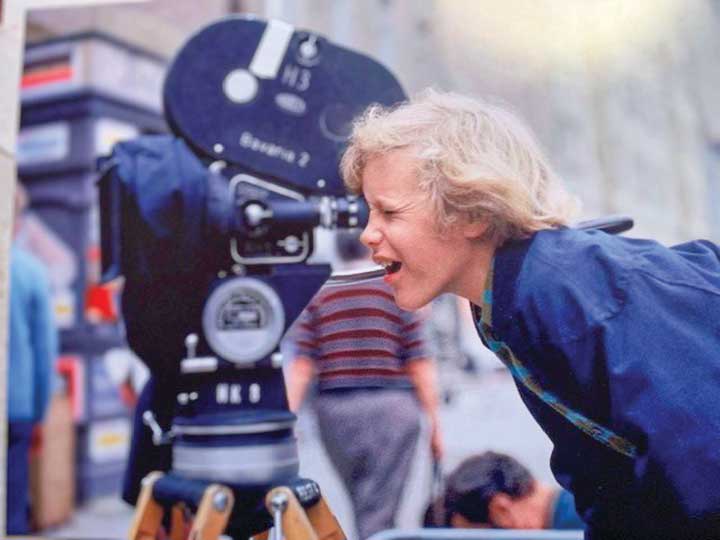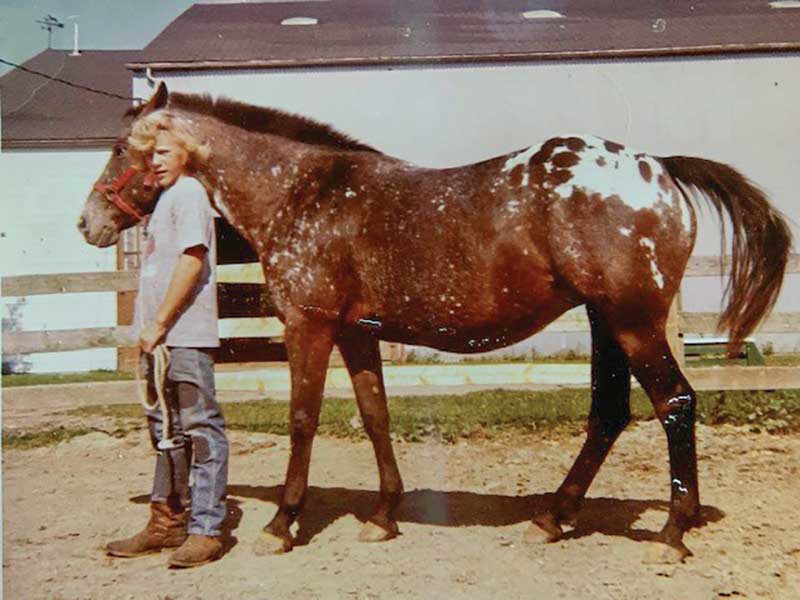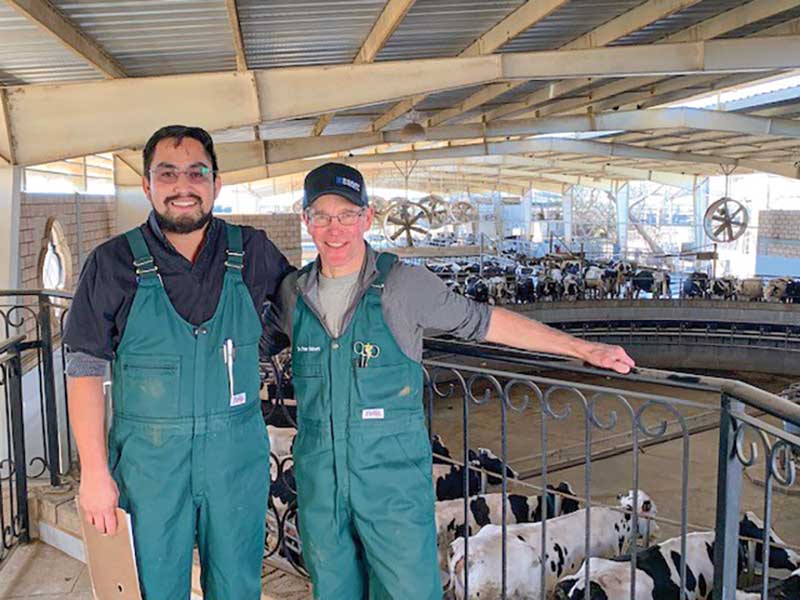
Photos courtesy Peter Ostrum
Peter Ostrum appeared in only one motion picture, but it was a big one: Willy Wonka & the Chocolate Factory, starring Gene Wilder as the titular candymaker. The movie was a hit and Ostrum’s career seemed set, but the young performer had a bigger dream–becoming a veterinarian.
Stepping into the limelight
Ostrum got into acting after seeing a selection of scenes from Winnie the Pooh during an assembly at his elementary school in Cleveland, Ohio. The event was hosted by the Cleveland Playhouse, one of the oldest professional theaters in the country, and students were encouraged to visit the playhouse to see more. Ostrum went with his parents, and quickly signed up for Saturday theater classes.
“My father had an interest in theater growing up, and he did some theater work in New York City after he retired,” Ostrum tells Veterinary Practice News. “My parents were more than happy to sign me up.”
Ostrum eventually started appearing in productions at the Cleveland Playhouse, where he honed his skills in a variety of roles. When he was in sixth grade, a casting agent visited the theater looking for young actors for an upcoming film production of Willy Wonka & the Chocolate Factory.
“At that point, I had only done theater and maybe one or two commercials,” Ostrum recalls. “They didn’t have a script, so I read from Roald Dahl’s book Charlie and the Chocolate Factory into a tape recorder. Then they took some Polaroid photos and returned to New York. About a month later, in July 1970, they flew me to New York for a screen test. Multiple people were trying out for the film, but it wasn’t a huge cattle call. I just happened to be in the right place at the right time.”
The film was shot in Munich, Germany, because producer David Wolper had just finished filming a movie there and his crew was in place. “When you look at the exterior shots, it’s difficult to tell where you are,” Ostrum says. “That adds to the mystique of the film a little bit.”
Ostrum enjoyed his time in Munich, and he and his parents, who accompanied him, did a lot of sightseeing during his time off. Ostrum’s father was especially interested because he had served in Germany during World War II and had been a prisoner of war for a time.
The film was fun to make, and Ostrum has fond memories of working with Gene Wilder and Jack Albertson, who plays Grandpa Joe in the film. “Both Gene and Jack couldn’t have been more friendly or more helpful,” Ostrum says. “I was the new kid on the block, the rookie.”
The film opened on June 30, 1971 to rather tepid reviews, though in later years it would achieve cult status. David Wolper offered Ostrum a three-movie contract, but after giving it some thought, the young actor declined. “They didn’t know what movies I would be offered, and that made me uneasy,” Ostrum says. “I had a great experience making Willy Wonka & the Chocolate Factory, but I don’t know that I fell in love with acting, per se. As it turns out, the point was moot because David Wolper moved on to television, including miniseries such as Roots, and never made another motion picture.”
The making of a DVM

Ostrum’s interest in veterinary medicine started at age 13, when he acquired a horse and started working at the equine boarding stable in Lyndhurst, Ohio, to pay the board. “I met the veterinarian there and I thought he had the greatest job in the world,” Ostrum says. “Once I realized veterinary medicine was something I wanted to pursue, I knew I had to buckle down and do well in my math and science courses.”
Two years later, Ostrum took a job at Friendship Farm in East Moline, Illinois, owned by Patricia Hewitt, of the John Deere family. In 1976, Hewitt sponsored the Japanese 3-Day Equestrian Team at the Olympic Games in Montreal, Canada. Ostrum had been working as a groomer for the dressage horses and was moved over to the Japanese 3-Day Team. As a result, he was able to attend the Olympics, where he watched the veterinarians in action.
“That’s where I really started to see high-level veterinarians working with horses,” Ostrum says. “I thought I would become an equine practitioner in school, so to round out my resume, I worked on a beef cattle ranch for six months. I really liked working with cattle, and while in vet school, I worked with a dairy practitioner in Vermont, which cemented my interest more in dairy than the equine world. It’s a different clientele.”
Ostrum performed his undergrad work at The Ohio State University, and received his DVM at Cornell University. From there, he participated in a food animal internship at the University of Florida in Gainesville.
Ostrum applied to dairy practices across the country, but had difficulty finding the right fit. He finally landed at Countryside Veterinary Clinic in Lowville, New York, where he worked for 37 years, retiring in December 2022. “Available outdoor activities were one aspect of what a perfect practice would be for me,” Ostrum says. “I like to hike, ski and canoe, and I could do that in Lowville.”
Established in 1935, Countryside Veterinary Practice is a mixed-animal practice with a focus on dairy. “I’m still associated with them, helping the new graduates,” Ostrum shares.
Working with large animals such as dairy cattle is hard work, and that greatly appealed to Ostrum. “I like the physical work, but also the mental tasks, the troubleshooting,” he explains. “I wasn’t just sitting in an office, I was facing the challenges of a day-to-day practice, helping people problem-solve.”
Moving forward

Though now retired, Ostrum still has his hand in dairy medicine through his involvement with Dairy Health and Management Services, a dairy consulting business with clients throughout the world. “We work with large, progressive dairies with a real emphasis on research and data-driven decisions based on the data that we collect,” says Ostrum, one of four founding partners. “Research trials may be driven from questions that we have as a consulting group or from the client themselves.”
For many years, Ostrum did not talk much about his involvement with Willy Wonka & the Chocolate Factory. Occasionally, a client would recognize him from the movie, but he kept that part of his life fairly quiet.
In recent years, however, Ostrum has come to embrace the wildly popular film and his role in it. He occasionally attends fan festivals and stays in close touch with his fellow cast members. “Other than my own family, I’ve known these people longer than anybody, since I was 12 years old,” he says. “We had no idea when we were making the movie that 53 years later people would still be watching it, talking about it, wondering what happened to Charlie and Veruca and Mike Teevee. We had no idea it would generate the success that it did.”
Every year, Ostrum visits Lowville Academy and Central School to talk about Willy Wonka & the Chocolate Factory and answer questions.
“The high school students always want to talk about my particular career choices and how I made the leap from theater to veterinary medicine,” Ostrum says. “The young kids want to know how Charlie Bucket flew. The answer is with very thin wires.”
Ostrum feels it is important to share his story with young people. “I want them to know that they have options in their lives, and when one door closes, another opens,” he explains. “It’s important for kids to realize that you don’t have to be locked into one particular thing. It’s okay to change your mind.”
Don Vaughan is an award-winning writer who frequently writes about veterinary-related topics.
